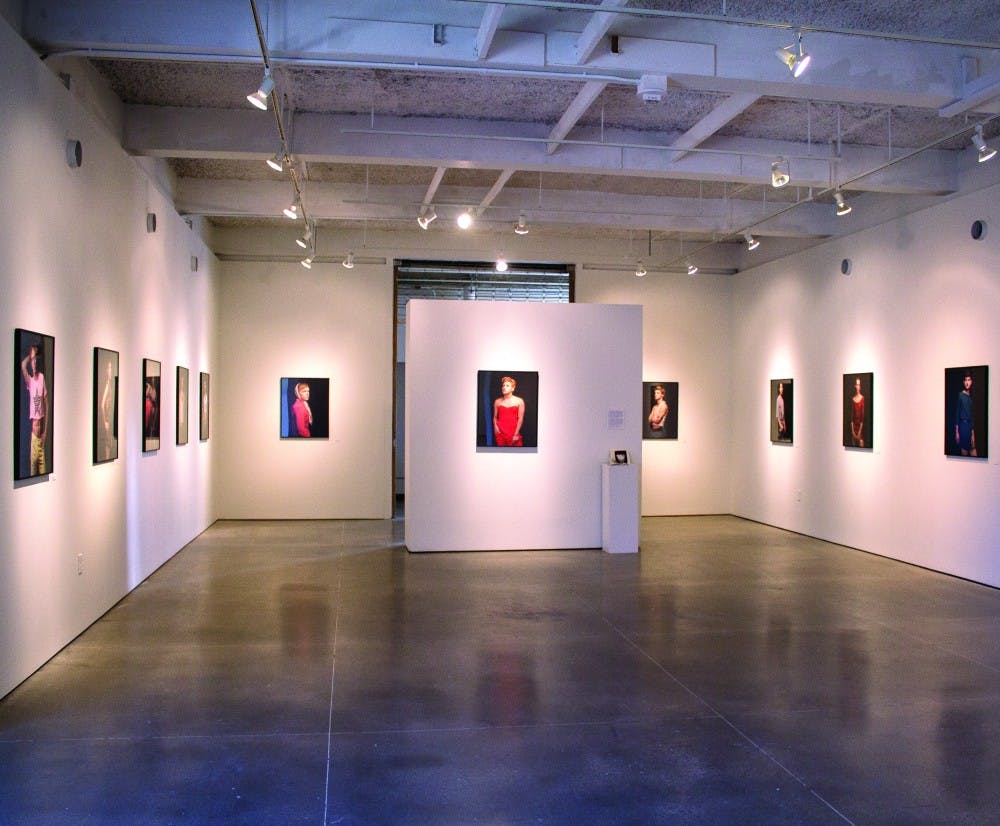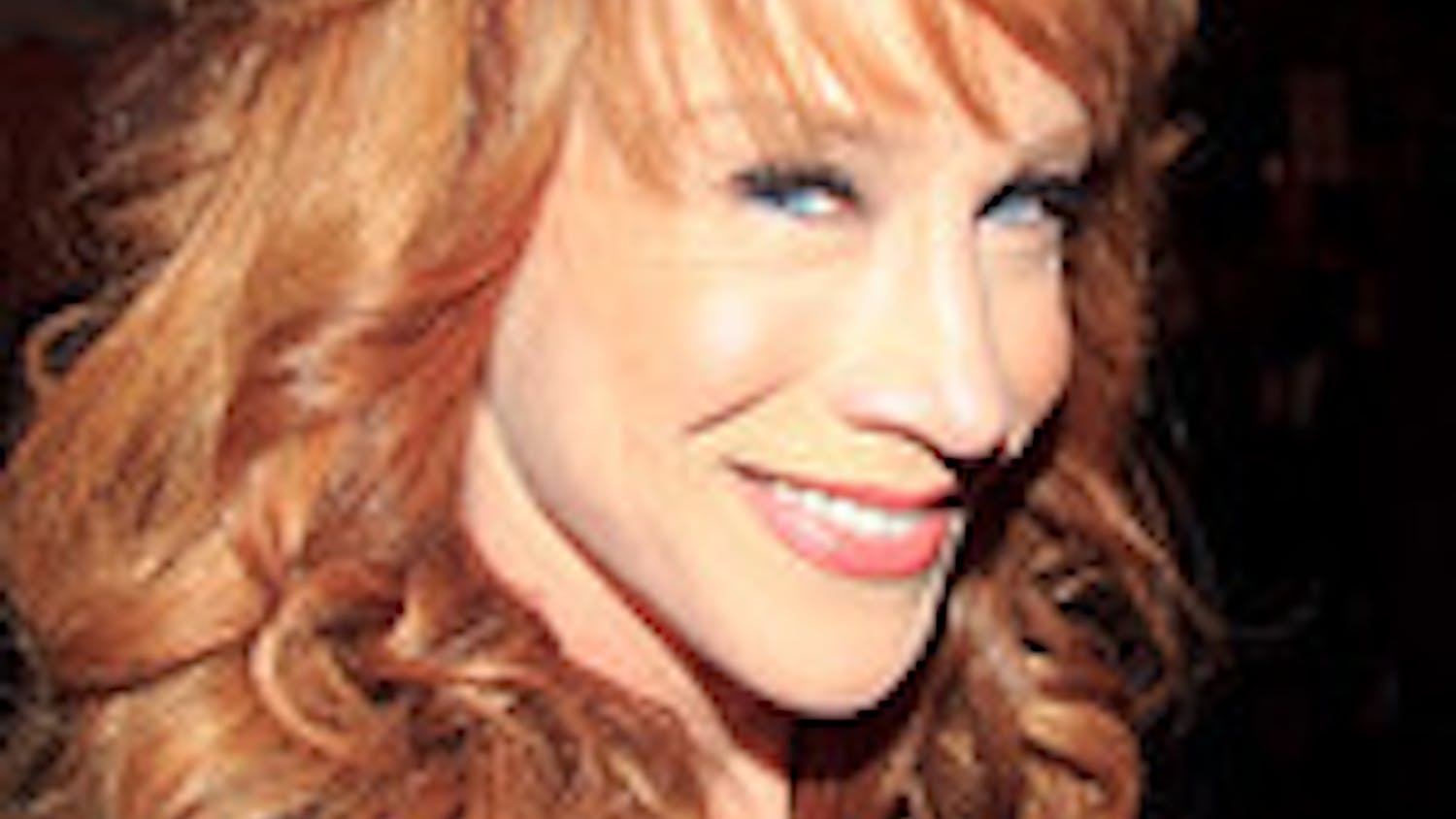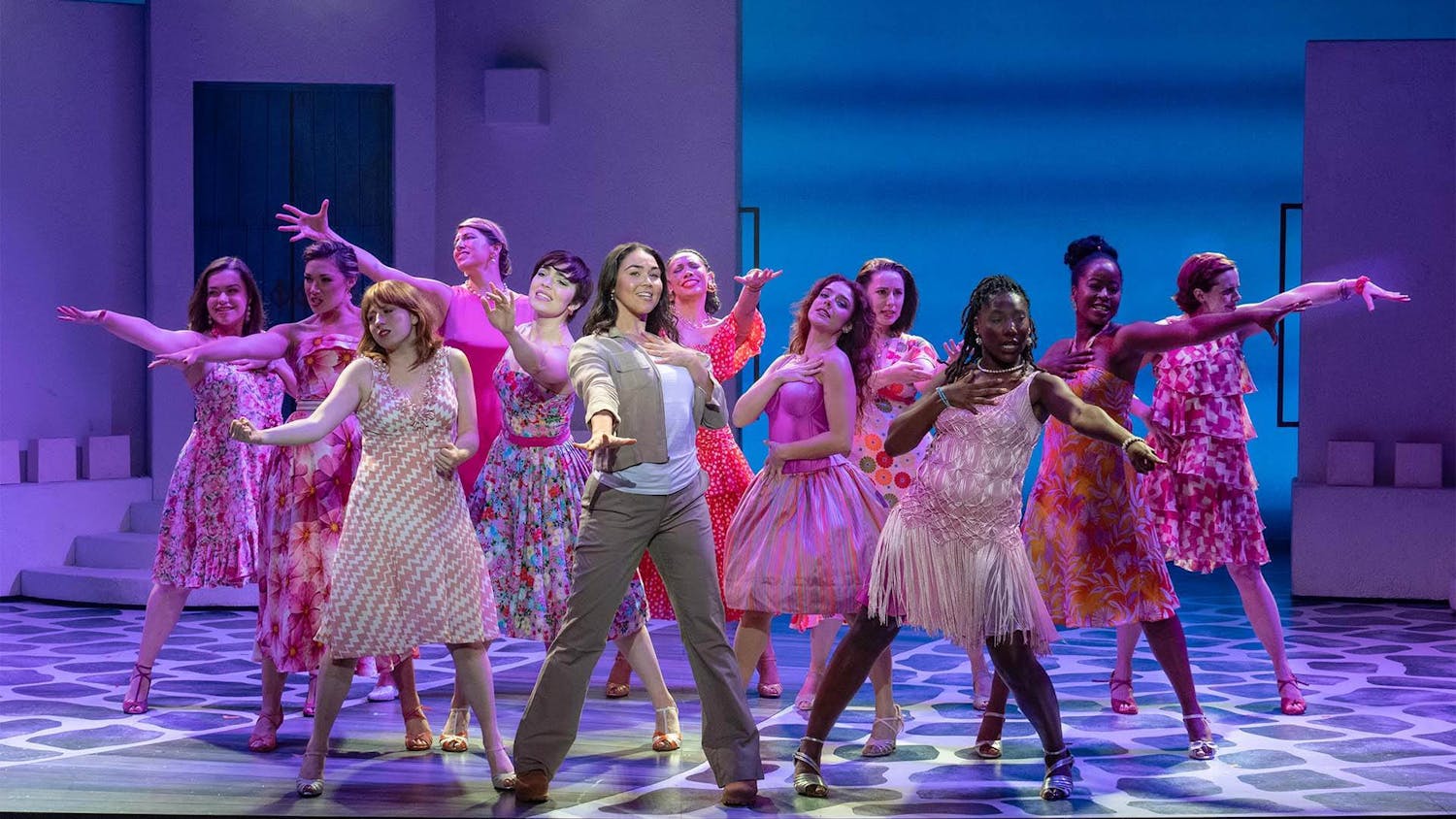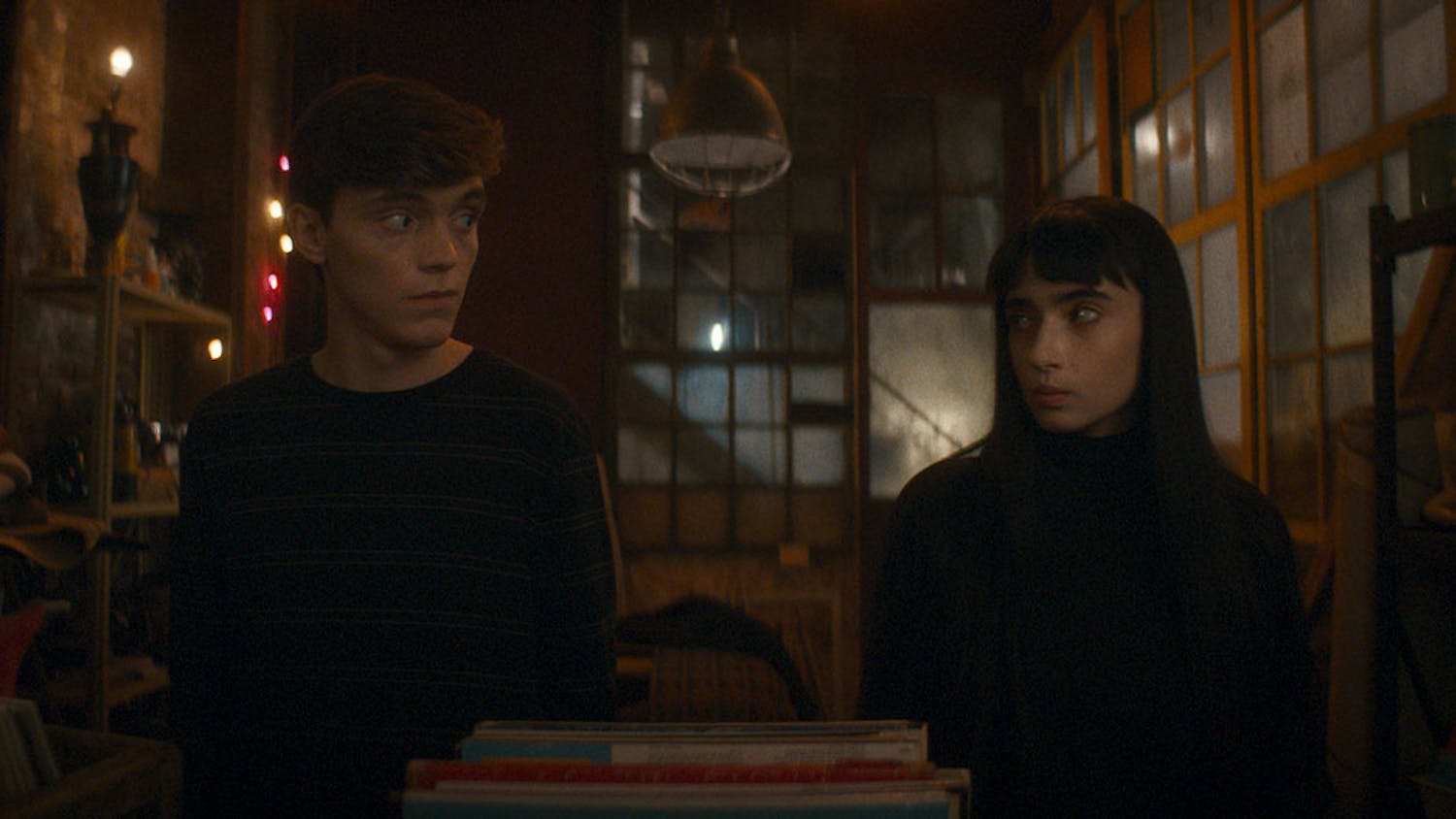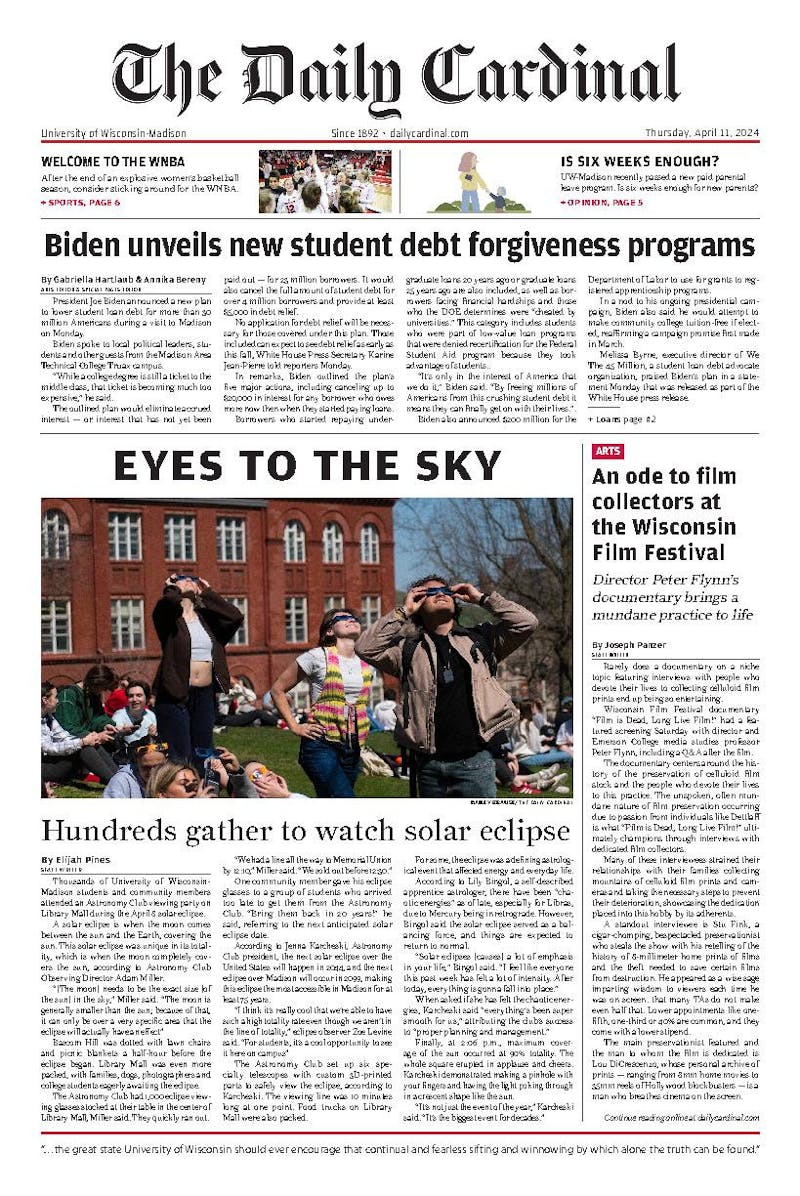The seventh floor of Humanities is an unlikely place to be filled on a Friday night, but on Friday for the opening of the show Clothing the Gender Gap, the little gallery was full. The atmosphere in the room was simultaneously uncomfortable and curious; after all, we were confronted with images we rarely encounter: men boldly dressed in women’s clothing.
Oddly, these men seemed to wear women’s clothing better than most women can. After talking with the artist and second-year MFA student Natalie Kirk, I gained a better understanding of this very concept. While photographing these men Kirk came to realize something: Men have what the fashion industry considers to be the ideal female body—small breasts, small hips and thin waist. Essentially, in today’s fashion, men have the more idealized female form than women do. Yet for many, seeing men in women’s clothing is unsettling.
What initially started this body of work was a pair of “boyfriend socks,” one example of a long list of boyfriend-themed clothing marketed towards women like boyfriend jeans and boyfriend cardigans. This got the wheels of Kirk’s brain turning. Why is there no girlfriend-themed clothing market to men? Kirk believes this has to do with the ever-present male gaze. Women are told their whole lives—by Disney movies, by their mothers, by their friends—that someday they will find their other half. When this happens, wearing a boyfriend’s clothing can be a form of social validation for a woman’s relationship.
Yet, why is not the reverse true? Why is there no social validation for men wearing their girlfriend’s clothing? Why is it that if a man wears women’s clothing, they’re almost always labeled unnatural? Even with a growing acceptance towards transgender culture and drag, most people that see a man on the street in women’s clothing are immediately surprised or disturbed. One of the only places where the majority accepts a man in women’s clothing is within the drag context. Why is it that men need an isolated place to act as permission to wear women’s clothing and women in men’s clothing can virtually be accepted, sometimes celebrated, anywhere?
The images around were haunting in a way I find hard to describe. It wasn’t because the men were in women’s clothing; that doesn’t bother me. It was because the men had a look I often see reflected back in many of my female friends, but rarely see in men. A fellow student and opening attendee summed it up best when she stated, “There’s something in their eyes. They are completely aware of what they are wearing.” The look also communicated how conscious they were of their body’s flaws showcased by the clingy nature of women’s clothing. These models were accepting to be vulnerable in a way that men are not usually asked to be.
What was even further interesting was how some of these men chose to deal with their insecurity the clothing emphasized. Some adopted classic male power poses, like one man with his arms crossed in front of his body, legs apart. Others decided to go for more “feminine” poses, such as a coy look over his shoulder at the camera. These performances by the male models are what I felt made Clothing the Gender Gap stand out among other portraiture.
Clothing the Gender Gap can be found in the seventh floor gallery of Humanities until Wednesday, Feb. 10.

